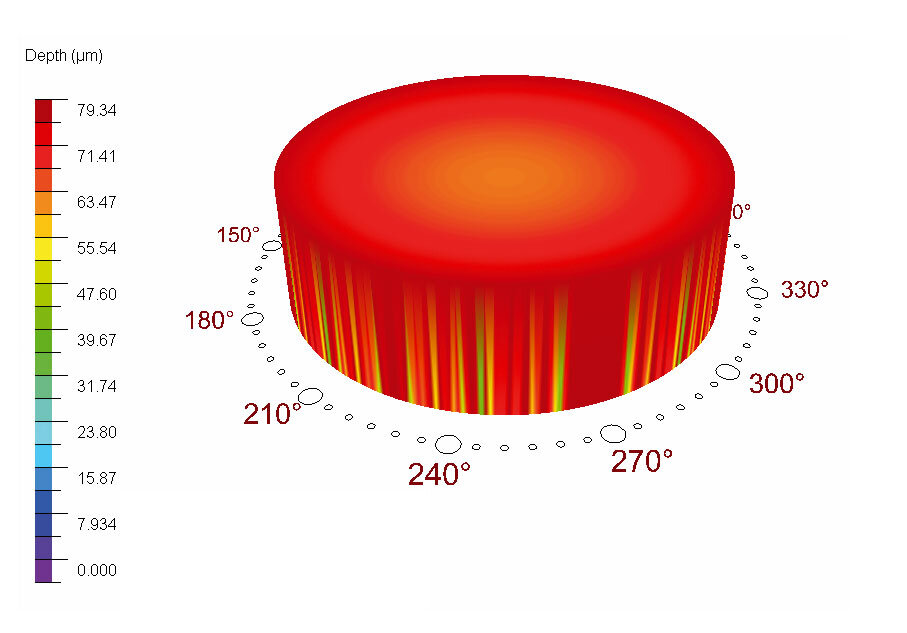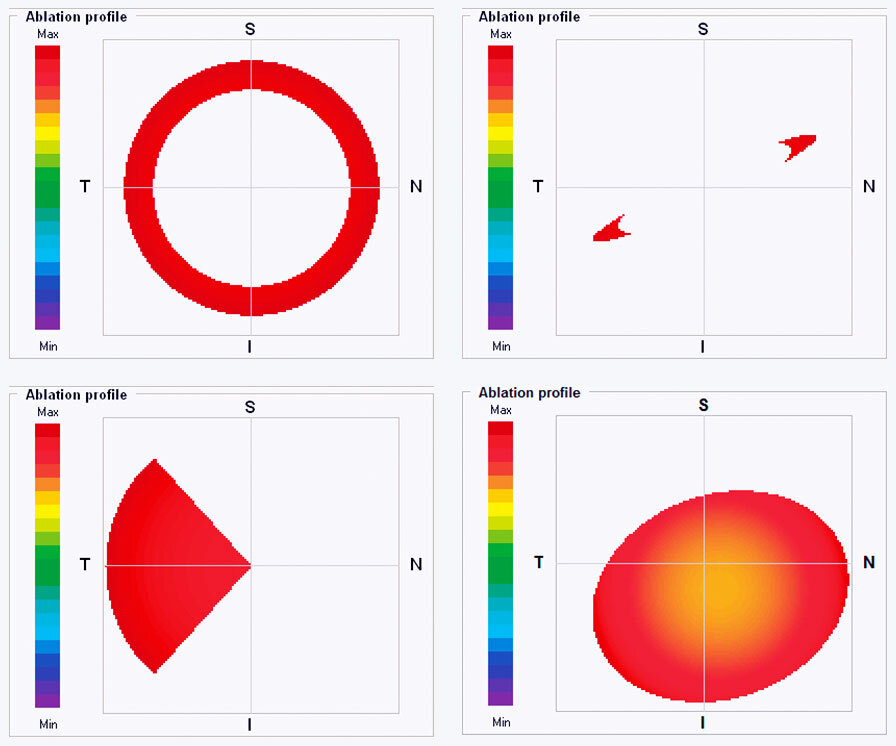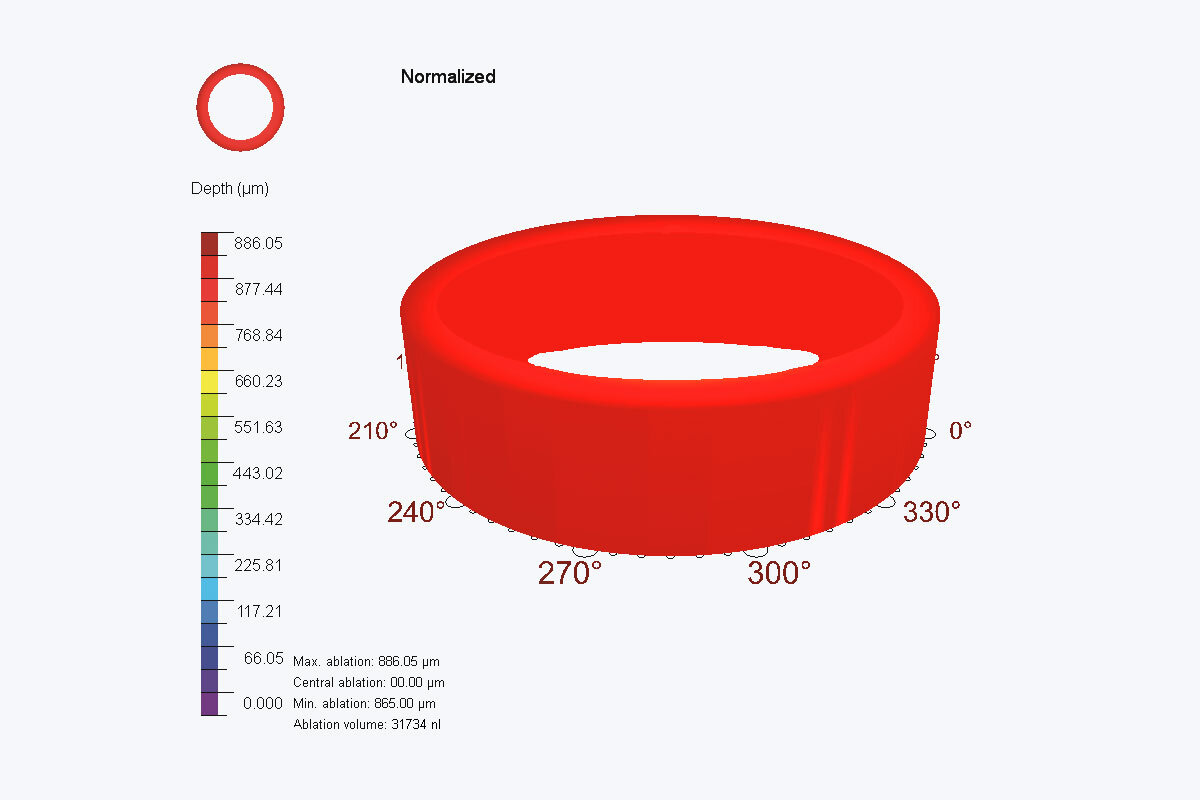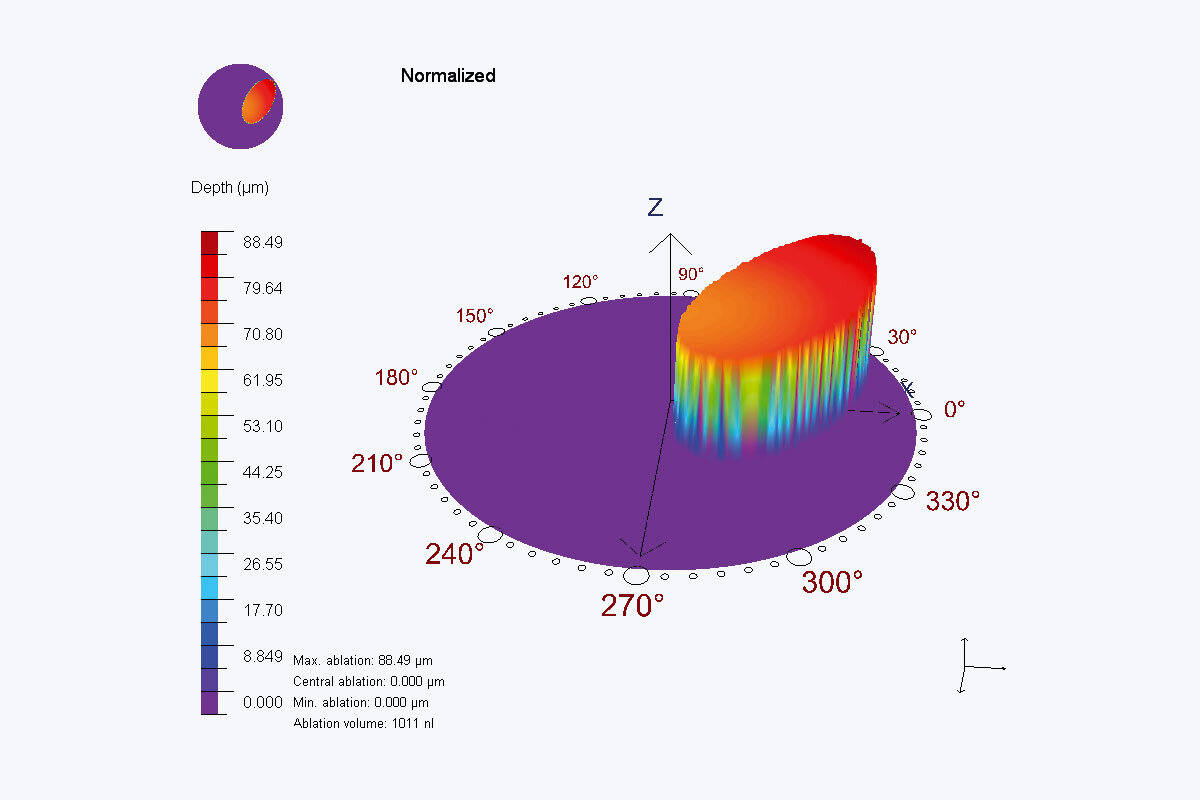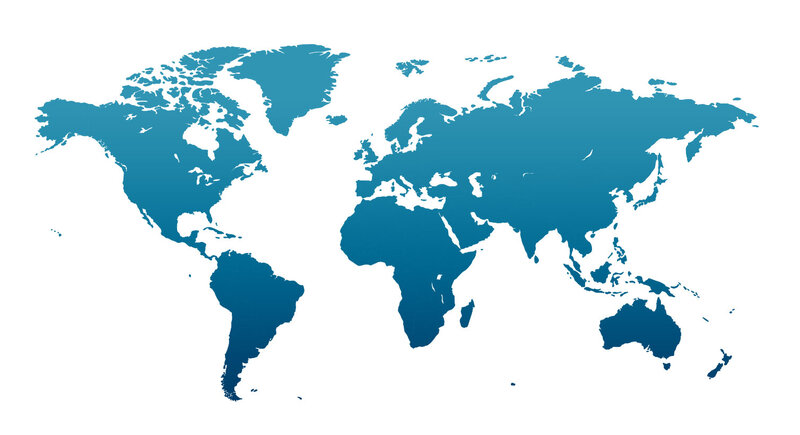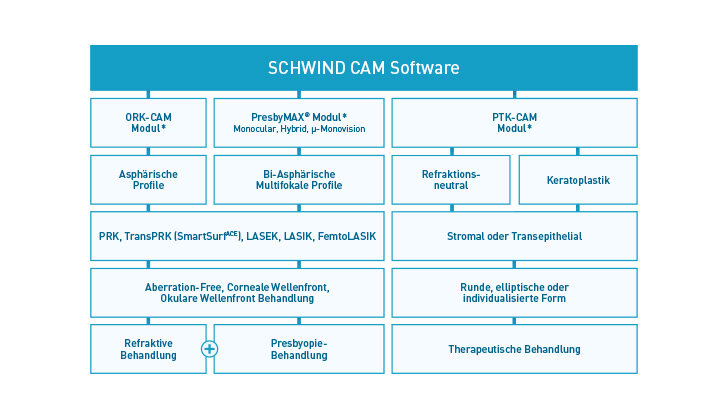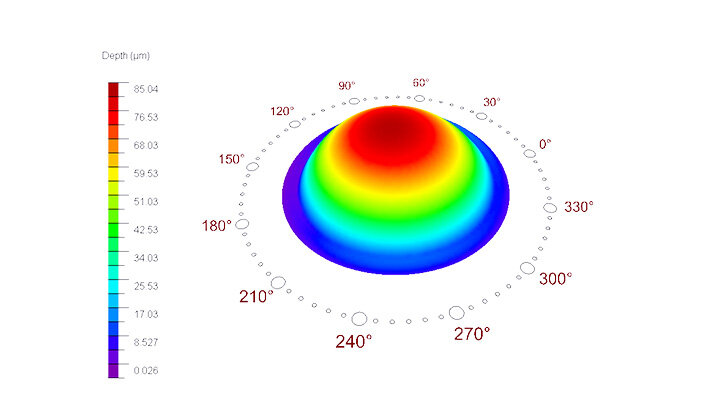TREATMENT TOOLS
PTK-CAM for successful cornea treatments
Effective planning for therapeutic procedures
The SCHWIND CAM PTK-CAM module supports treatments for corneal degeneration,
dystrophy and erosion, as well as superficial and deep corneal scars. PTK-CAM is based on phototherapeutic keratectomy (PTK) and addresses superficial refractive-neutral ablation, as well as deep ablation for perforating laser-assisted keratoplasty with the KPL option.
Benefits at a glance
Safe and precise planning of phototherapeutic corneal ablation,
including penetrating keratoplasty (KPL)
Many options for tissue ablation, depending on the clinical indication
The highest precision through refractive-neutral ablation
Safe corneal transplants with KPL
The KPL (keratoplasty) option provides for safe, precise planning of deep corneal ablation.
Separation of the tissue with an excimer laser gives more precise results in terms of centring and alignment than does a femtosecond laser. This means less astigmatism, a more homogeneous cornea, and improved vision.
No eye suction is required for laser-assisted KPL. In penetrating keratoplasty, the donor and recipient corneas are treated touch-free with the SCHWIND AMARIS laser.
Free choice of ablation shape and depth
With PTK-CAM, the surgeon can freely decide how deep to ablate. The module is designed as a toolbox and provides for round, elliptical or individual ablation profiles.
The highest precision
The innovative PTK profile prevents refractive changes like hyperopisation and astigmatism. Ablation is refractive-neutral.
Using “ablation offset” and “pupil offset” simultaneously favours the topographically exact correction of superficial scars. Pupil offset lets the doctor move the ablation to the centre of the topography. Ablation offset allows further shifting of the ablation based on the cornea findings.
